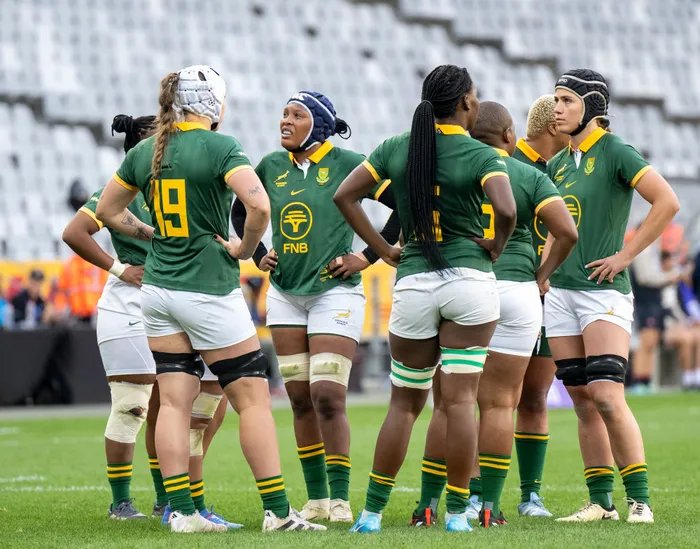A hundred days to Women's Rugby World Cup, and Canada’s One Squad principle could potentially transform SA rugby

The Springbok Women are hard at work in their latest high-intensity training camp, with Wednesday marking 100 days until the Rugby World Cup kicks off in England.
Image: Henk Kruger, Independent Newspapers
The Springbok Women are hard at work in their latest high-intensity training camp, with Wednesday marking 100 days until the Rugby World Cup kicks off in England.
The squad was joined at the weekend by sevens players who did duty in the HSBC SVNS Play-off in Los Angeles.
A number of those players have had to juggle a demanding schedule as they yo-yo between the two formats throughout the season. This can be extremely disruptive to players and management teams. While the South African national teams are not unique in this regard, there is a potential solution.
Canada Women's rugby uses a One Squad philosophy, which means a single group of players is selected for both the XVs and Sevens teams, enabling players to potentially compete in both formats. The system aims to unify and align the entire Canadian rugby ecosystem, from players to coaches, fans, and administrators, to create a stronger, more connected rugby community and ultimately, a more successful national team.
It was born out of the realisation that Canada didn't have the depth of players like England, France, and New Zealand, or even South Africa, for that matter.
Women's rugby in Canada is an amateur sport. Most of the players in South Africa's Women's Premier Division are also amateur, with the Bulls Daisies the notable exception. The One Squad system has proven to be a great leveler, creating greater depth and flexibility, as players can make the transition between the two codes. Coaches also split their time between the two national sides.
The benefits include attracting, engaging, and retaining players, building a unified high-performance system, and expanding the reach and quality of rugby across Canada. The One Squad approach also involves a larger pool of players.
South Africa is already used to this. The current training camp in the Cape features 25 forwards and 20 backs with a short-term focus on the Africa Cup in Madagascar.
The difference is that a number of players will fall in and out, while the One Squad system allows for a strong core to be retained that serves both national teams, and for all the players to get more valuable game time. It also makes it easy to implement a unified Springbok playing style across both formats, without having to adapt to different playing philosophies each time players make the switch.
With a number of SA players already multi-format stars, the transition to a One Squad system should not be too difficult. They may have had some teething problems, and concede that it's not perfect, yet the Canadians are reaping the benefits of the system. Unlike SA, their sevens women are regular contenders for the top tier HSBC SVNS crown. The Springbok Women's Sevens have been consigned to another season on the Challenger Circuit.
The Canadian XVs team is also ranked among the world's best. And the South Africans can get a closer look at the potential benefits of the system when the Canada Women visit SA for two Test matches in July as part of their World Cup preparations. With the clock ticking towards the showpiece in England in August and September, it is not a quick fix. Canada implemented the One Squad system a few years ago already.
The next World Cup cycle could be the ideal time to kick-start it. And could yet be the saving grace for South African women's rugby, just like it was for Canada.
Related Topics: